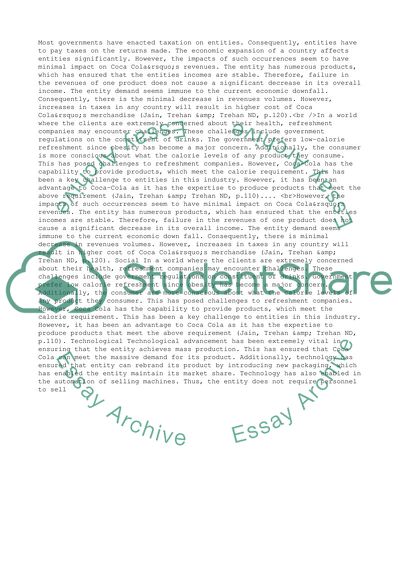Cite this document
(“Pest Analysis of Coca Cola Essay Example | Topics and Well Written Essays - 1000 words”, n.d.)
Pest Analysis of Coca Cola Essay Example | Topics and Well Written Essays - 1000 words. Retrieved from https://studentshare.org/management/1401198-pest-analysis-of-coca-cola
Pest Analysis of Coca Cola Essay Example | Topics and Well Written Essays - 1000 words. Retrieved from https://studentshare.org/management/1401198-pest-analysis-of-coca-cola
(Pest Analysis of Coca Cola Essay Example | Topics and Well Written Essays - 1000 Words)
Pest Analysis of Coca Cola Essay Example | Topics and Well Written Essays - 1000 Words. https://studentshare.org/management/1401198-pest-analysis-of-coca-cola.
Pest Analysis of Coca Cola Essay Example | Topics and Well Written Essays - 1000 Words. https://studentshare.org/management/1401198-pest-analysis-of-coca-cola.
“Pest Analysis of Coca Cola Essay Example | Topics and Well Written Essays - 1000 Words”, n.d. https://studentshare.org/management/1401198-pest-analysis-of-coca-cola.


